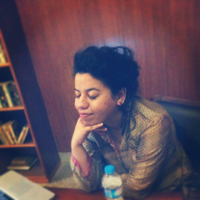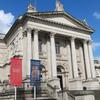More about The Chapman Family Collection

Contributor
Seems like the Chapman brothers have caught on to the stereotypical presentation of faraway, exotic art and used it to create The Chapman Family Collection.
You see, years of field research have determined a universal truth about museums: the “African Art” section is almost always classifiable by a dramatic darkness with strategically placed haloes of light, a musty scent and perhaps the soundtrack of primal beating drums. So it makes sense that upon walking into the suddenly dim room of The Chapman Collection at the otherwise well-lit Tate Britain, a French student looked around and said to his friend, “ugh…eets just some Afreekan s**t!”
They’re not too far off. This array of sculptures resting on plinths and platforms does indeed resemble the normal curatorial hodgepodge of ancient relics. But hold on…look closer...what’s a 500 year old artifact from Ekoc doing with french fries? And why does that carved wooden figure have a quarter pounder for a head? Is that…Ronald McDonald?!
Deliberately inauthentic, this collection of faux ethnographic objects seems to make McDonalds a cultic religion. Combining the primitive with the modern, this body of work is a commentary on issues like globalism, consumerism and fetishism for non-Western objects. The brothers Chapman are lampooning insitutional exhibitions that only praise African art for its influence on European Modernism, displaying ancient objects but using them to serve the capitalist system -- just as mass-produced and synthetic as a box of McNuggets.
This Turner prize-winning work made Charles Saatchi say it was “what great art should be”, and he paid the humble sum of £1m for it. Later on, the Tate acquired the installation in what was rumored to be one of the museum's most expensive purchases. Wonder if someone would pay that kinda dough for the McMuffin I nailed to my Barbie once...











